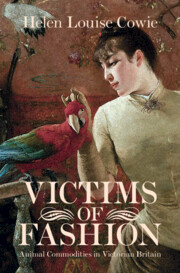Book contents
Epilogue
Past, Present and Future
Published online by Cambridge University Press: 29 October 2021
Summary
The nineteenth century witnessed the first major wave of concern for the survival and welfare of wild animals and the first stirrings of an international conservation movement. In the short term, these measures largely succeeded. None of the animals discussed in this book became extinct before 1914, despite fears for their survival, and several species were brought back from the brink by effective conservation legislation, the creation of viable substitutes and changing consumer habits. In the long term, the legacy of turn-of-the-century conservation measures has been more mixed. Some of our species have made a spectacular recovery, while others have succumbed to new, even more serious, threats, in many cases due to a growing consumer demand for their products in East Asia. To conclude this study, therefore, it seems appropriate to bring the stories of our animals up to date and ask what the long-term impact of exploitation and conservation has been. Are egrets, fur seals and African elephants doing better today than they were in 1900, or are they once again in trouble? To what extent do nineteenth-century precedents continue to influence contemporary conservation measures?
- Type
- Chapter
- Information
- Victims of Fashion , pp. 251 - 264Publisher: Cambridge University PressPrint publication year: 2021



